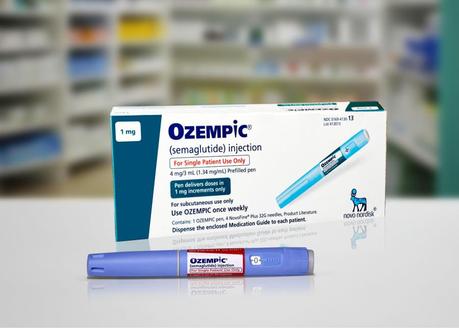We've all heard of Ozempic, the "miracle" weight-loss drug that has transformed the figures of A-listers including Winfrey and Rebel Wilson.
Originally formulated as a diabetes drug, it is now prescribed for weight loss in the US, and a similar drug - Wegovy - is available in Britain.

2
But for anyone who doesn't like the potentially unpleasant side effects - nausea, vomiting, diarrhea and a bad mood - there is a natural alternative available in the form of fiber.
It's proven to help shed the pounds, but the benefits of fiber in your diet don't stop there.
The NHS says it is associated with a lower risk of life-threatening diseases, including heart disease, stroke, type 2 diabetes and bowel cancer.
British guidelines recommend that adults eat 30 grams of fiber daily. But according to the British Dietetic Association, the average adult intake is just 18 grams.
Often think of "fibre" and Weetabix or bran flakes. But fiber is everywhere.
"It's found in plant-based carbohydrate foods, such as whole grains, fruits, vegetables, beans, legumes, nuts and seeds," says Dr. Emily Leeming, microbiome scientist, dietitian and author of Genius Gut.
So why are experts and influencers only now starting to preach about fiber as much as they do about protein or superfoods?
"Fiber has always had a reputation for being a bit boring," says Emily.
"That's partly because many people still don't understand what it is or why it's so good for us." Ready to find out?
Fiber decoding
There are a dozen types of fiber, which generally fall into one of two categories: soluble or insoluble.
"Soluble fiber dissolves in water and creates a gel-like substance, making it easier to absorb nutrients slowly and steadily," says registered nutritionist Rob Hobson.
This process can aid weight loss and is linked to a lower risk of type 2 diabetes and 'bad' cholesterol. Sources include oats, barley, beans, nuts, lentils, fruits and vegetables.
"Insoluble fiber does not dissolve in the intestines and therefore cannot be digested," says Rob.
"It adds bulk to your stool and helps push food through the digestive system."
To help things along, look for whole wheat breads and cereals, brown rice, bran cereals, nuts, seeds, avocados and some fruits with skin, such as tomatoes, kiwis and grapes.
"High-fiber foods usually contain a mix of fiber," says Emily. "So it's important to consume a wide variety of fiber-rich foods to reap all the benefits."
To fall off
Forget low-fat or low-carb diets and think high-fiber - research has shown the benefits of focusing on fiber when it comes to shifting (and keeping) excess weight away.
One study found that fiber was the strongest predictor of weight change when 345 people were divided into groups and fed different diets.*
On average, an increase in fiber intake by 10 grams per day resulted in an additional decrease in body weight of 2.2 kg after six months.
"Fiber can be very helpful in weight loss," says Emily. "It slows the release of sugar into the bloodstream and increases the feeling of fullness."
Nourishing your intestines
Whether it's for a better mood, better skin or bloating, taking care of your gut is crucial.
"Twenty years ago we didn't really know much about the gut microbiome," says Emily.
"Only now are we recognizing that a healthy gut microbiome is the cornerstone of good wellbeing - and that fiber plays an important role. Your gut microbiome helps break it down.
"Eating it increases the number of beneficial bacteria and improves the diversity of your microbiome," she adds.
Researchers from King's College London discovered that prebiotic fibers are the best type for boosting 'healthy' gut bacteria. "Foods rich in this fiber include bananas, raw onions and garlic," says Rob.
"Resistant starches also act as prebiotics. These form on foods such as pasta, rice and potatoes after they have been cooked and then cooled.
Reduce the risk of cancer
There is some evidence that increasing fiber can help lower the risk of heart disease, stroke and diabetes. It can also lower cholesterol - the fatty substance that clogs arteries and threatens the heart.
"The results of 22 studies showed that the risk of cardiovascular disease and coronary heart disease both fell by 9% for every 7 gram increase in dietary fiber per day," says Rob.
That's the equivalent of just 100 grams of almonds. Every 10 grams of extra fiber could also reduce the risk of colon cancer by 10%.
"Fiber is an important part of gut health," says Emily. "It adds bulk to your waste and keeps everything moving through the intestines."
Fiber Hacks
Sprinkle nuts or seeds over salads, yoghurt, porridge and stir-fries to give meals a fiber boost.
If you make pasta or rice, opt for the "whole" version: 50 g of whole wheat spaghetti contains 5.3 g of fiber, compared to 0.75 g of regular pasta.
Add cans of legumes (such as beans, chickpeas or black beans) to a salad, casserole or soup. Lentils contain the most fiber per 100 g (7.9 g).
Look for pre-mixed packets of grains that you can use as a base for a cold salad.
Eat a baked potato and beans for lunch - the skin of fruit and vegetables is rich in fibre.
Add vegetables, such as spinach or kale, to as many meals as possible.
Swap the low-sugar, sweetened yogurt for Greek yogurt with berries and nuts.
High Fiber Meal Plans
BREAKFAST*Overnight oats (12 g)
LUNCHSNACKS (up to 3g)
DINNER
*The Journal of Nutrition Genius Gut by Dr. Emily Leeming (£18.99, Penguin) is available now